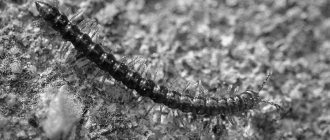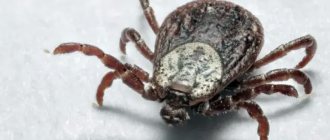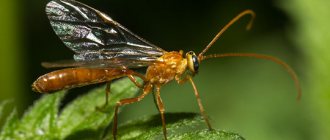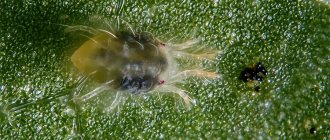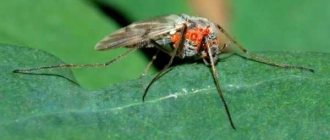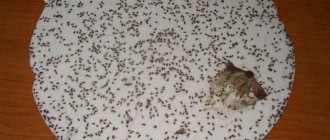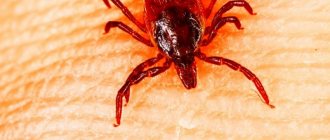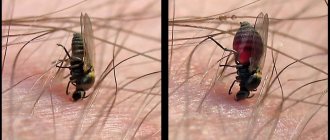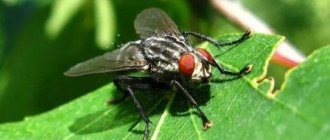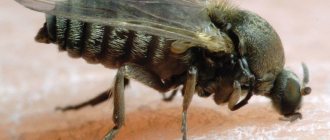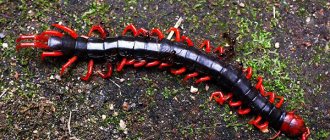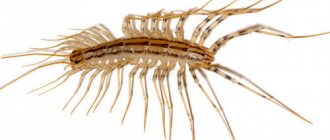The fly is the most familiar and most annoying insect for us, which attacks our homes in the warm season. This usually lasts from spring until late autumn. We are accustomed to seeing ordinary house flies and green flies, which we associate with dirt and infectious diseases. But in fact, we know very little about these insects. There are about 75 thousand different species of flies in the world, among which there are both those that bite and carry infection, and completely harmless creatures.
Many of us have only a negative image of a fly. As a rule, we associate it with a buzzing sound that gets on our nerves and unsanitary conditions. But it turns out that the fly is an integral element of the biosphere, without which our planet could not fully exist. Many animals feed on adult flies and their larvae. Some types of flies pollinate plants, while others participate in the process of decomposition of plant waste and eat caterpillars and bugs. If it were not for flies, our planet would have long been littered with various plant debris.
What kind of insect is this?
A fly is a two-winged insect belonging to the phylum of arthropods, the order of flies and mosquitoes. The insect's body length varies from a few millimeters to 2 cm, depending on the species.
The lifespan of flies is 1–2.5 months. One of the most important distinguishing features of the fly is its huge eyes, which consist of several thousand hexagonal lenses. Thanks to this structure of the eyes, the fly has very good vision and is able to see even what is happening from the side and behind, that is, it practically has a circular field of vision.
Parasitism on humans
Shepherds, hunters, gamekeepers, and ordinary nature lovers are regularly attacked by pests. While waiting for prey, the moose fly reacts to movement and the smell of sweat. Up to 120 flies can attack one person at a time. They cling tightly to clothes, are not afraid of sudden movements, make their way to the body, and get into the hair. They begin to bite after 15-60 minutes.
Interesting!
Moose ticks practically do not attack small children under the age of 10 years. If a teenager is next to an adult, he will not suffer the same fate. Pests prefer large victims.
In the case when the fly stuck to the hair, it could be detected a few days later, when itching and painful sensations appeared. It is much easier to find the parasite in other parts of the body. Moose flies can stay in your hair for several days to a week. When combed, they cling tightly and are difficult to remove.
Room
The fly belonging to this species practically no longer lives in the wild. Therefore, she is the most annoying and impudent guest in our homes in the summer-autumn period. At this time, our life is complicated by the constant struggle with these small, but very fast and resourceful insects.
House flies are most active during the daytime. The homeland of this insect is the steppe of Central Asia. But at the moment, its distribution is observed everywhere near human homes - both in rural areas and in cities.
A fly of this species is not a biting or blood-sucking insect, but nevertheless it causes significant harm to humans. Its limbs have tentacles on which various harmful bacteria and dirt accumulate, leading to infectious diseases.
The housefly's body is gray with brown tints. It consists of the abdomen, head and chest. The chest is connected to wings and three pairs of legs. On the head there are very large eyes, occupying almost the entire head, an oral cavity and short antennae. The upper part of the breast has four dark stripes, the belly has black spots in the form of quadrangles. The lower half of the head is yellow. The total body length of the fly usually does not exceed 8 mm. Males by size
There are fewer females.
The female has a wider frontal part of the head, and the distance between the eyes is greater than that of the male. The flight of a fly is carried out only with the help of two front membranous transparent wings, and the hind wings (haleteres) are necessary only to maintain balance.
In appearance, many types of flies are similar to the house fly, but its distinctive feature is the vein that forms a break in front of the edge of the wing. The limbs of the housefly are thin and long with suction cups for convenient movement on various surfaces. These suction cups allow her to move freely even on a vertical glass plane and on the ceiling. The fly's flight speed is very high, and it can last for several hours.
Nutrition
Despite the small antennae, the housefly has a keen sense of smell. She can smell the smell of food over long distances.
The fly feeds on everything that people eat, but prefers liquid food.
Its mouthparts are not capable of biting - they only have a licking-sucking function. To do this, the fly has a flexible proboscis on its head, with which it not only sucks liquid food, but also absorbs solid foods. The fact is that the fly secretes saliva, which dissolves solids.
Reproduction and development
The housefly's favorite place to lay eggs is in rotting, moist environments such as manure and various sewage. Having chosen a suitable place, the female lays from 70 to 120 white eggs, the length of which is about 1.2 mm. The transition stage from egg to larva, depending on environmental conditions, lasts for 8–50 hours. The larva is an elongated white body without limbs, similar to a small worm 10–13 mm long, with a pointed head. It continues to live in the feces of various farm animals (horses, chickens, cows).
After the larva has 3 molts, after 3–25 days, its shell hardens and separates from the body. Thus, it becomes a pupa and after 3 days turns into a young fly, which can produce offspring within 36 hours. The average lifespan of a house fly is 0.5–1 month, but sometimes, under particularly favorable conditions, it can live up to two months. A female can lay eggs up to 15 times throughout her life. Depending on the air temperature and other climatic factors, the total number of offspring ranges from 600 to 9,000 eggs. The breeding season of the housefly lasts from mid-April to the second half of September.
Description of appearance
This amazing creature resembles a flea, louse, tick, and fly. At a certain stage of development, there is a pair of transparent wings on the back, which reach a length of 6 mm. The insect uses them only to move upward, a short distance. Outwardly it looks like a fly, but after it gets on the host’s body, it sheds its wings and is more like a flea or tick.
The body is elongated, up to 3.5 mm in size. Shiny dark cover, flattened shape. A clearly visible head with pronounced large eyes. In addition to them, there are 3 more simple eyes on the head.
On a note!
Apart from its powerful paws, the creature resembles a flea. But, given the way the moose fly digs its claws into the skin, it looks more like a tick.
The body is flat with a durable chitinous cover. In a hungry state, the insect is very difficult to crush. As food arrives, as well as during pregnancy, the abdomen greatly increases in size.
The mouthparts of the moose fly are piercing-sucking, reminiscent of the structure of a burner fly. The proboscis has a row of hard chitinous bristles that act as teeth and help gnaw through the skin of warm-blooded animals. A photo of a moose fly is shown below. You can clearly see an amazing creature with different names.
moose fly
Hoverfly
Hoverflies, or syrphids, are in many ways similar to wasps - both in external characteristics and behavior. They can also hover in flight without stopping their wings. In summer they can often be found in your garden or vegetable garden near umbelliferous or asteraceous plants. But unlike stinging wasps, hover flies are completely harmless. Its body is black and yellow striped with two transparent wings. The head is semicircular with large dark brown eyes. Adult insects feed on flower nectar. The fly got its name because of the sound, similar to the murmur of water, that it makes when hovering in flight.
Hoverfly larvae can live in various environments: in water, in wood, in anthills.
The most favorable place for hoverflies is the accumulation of aphids, since aphids are the main food for the larvae. They also feed on the eggs of some insects and spider mites.
Syrphid eggs are translucent oval with a pinkish, greenish or yellowish tint. The larvae appear 2–4 days after the female lays her eggs. Their body is elongated
wrinkled, narrowed in front and widened behind.
The larva is very lazy. Its physical activity is observed only when hunting aphids. It rises, sways from side to side and suddenly attacks the victim, immediately absorbing it. Then, in search of the next portion of food, it moves, rolling its body mass from one end to the other. The older the larva, the more voracious it becomes. As a result, during 2–3 weeks of its development, it eats up to 2,000 aphids.
An adult fly can lay 150–200 eggs at a time. In total, for the entire season (spring–summer–autumn) there are 2 to 4 generations. The hoverfly is a very useful insect for the garden, as its larvae destroy a huge number of aphids that are harmful to fruit trees. Many gardeners specifically create favorable conditions for the reproduction of this fly by planting dill, carrots, parsley and other umbrella plants in their garden.
Green (carrion)
Despite its partiality to various kinds of carrion and sewage, this fly is a very beautiful insect with a glossy emerald body and translucent smoky wings with a faint openwork pattern. Its body length is about 8 mm. The fly's eyes are large, reddish, its abdomen is round, its cheeks are white. Green flies live mainly in dirty places : on decaying animal corpses, in manure, waste - but sometimes they can be
meet among flowering plants with a strong aroma. They feed on organic rotting matter, where they lay their eggs.
After mating, the female lays about 180 eggs. The egg has a grayish or light yellow tint. She tries to hide them as deep as possible in carrion, where they develop within 6–48 hours to the larval stage. The length of the larvae's body varies between 10–14 mm. After 3–9 days they leave their habitat and move to the soil to pupate. The pupal stage lasts from 10 to 17 days (depending on weather conditions), after which the insect emerges to the surface as an adult fly.
Harm to animals
The danger of the elk fly for animals
Hunters counted up to 300 individuals on the body of one deer. The pest is able to stick tightly to the fur and cannot be torn off even with teeth.
- The bite of an elk fly causes pain, discomfort, and after a while inflammation of the affected area, swelling, and itching.
- Animals react painfully to the attack of parasites, sleep poorly, and lose strength.
- In domestic cows, the amount of milk decreases, and beef breeds of cattle lose weight.
- The tick-like fly is especially dangerous for young animals. If the infection is severe, calves become ill, are delayed in development, and even die.
- The wool comes in clumps and takes on a sloppy appearance. The wounds often become infected and begin to fester.
- During the day, the female feeds about 20 times and drinks about 1.5 ml of blood in one procedure. With severe infection, young animals die from anemia, adults become weak and sickly.
On a note!
The deer bloodsucker does not carry diseases, but causes damage to health through its vital activity.
Ilnitsa-beeweed (tenacious Ilnitsa)
This type of fly belongs to the hoverfly family. In appearance they are similar to an ordinary bee. The average length is 1.5 cm. The abdomen is dark brown in color, covered with plumage of small hairs; on the side there are large red spots with a yellowish tint. In the middle part of the fly's face there is a wide, well-developed shiny black stripe. Before our eyes - two
vertical stripes with thick hair. The hind limbs in the lower leg area are also covered with hairs. The insect's thighs are almost black.
The larva of the bee moth is dark with a gray tint. The body of the larvae has a cylindrical shape and reaches a length of 10–20 mm. The larva breathes using a special breathing tube, which can stretch up to 100 mm in length. This organ is very important for her, since she lives in conditions of fetid liquids, garbage pits and pond sewage, and can only breathe clean air.
This insect is active from July to October. Illices feed on the nectar of various flowering plants.
Beeworm larvae can be the source of a dangerous intestinal disease found in some European countries, Africa, Australia, Chile, Argentina, India, Iran and Brazil.
The disease occurs as a result of fly eggs entering the human intestines along with food. There the larva hatches and begins to develop, causing enteritis.
Pusher flies
Pusher flies are small predatory insects that are found in almost all parts of the planet. These flies received this name because of their bizarre behavior. Before mating, during courtship, male tuskers gather in flocks and begin to perform peculiar dances. In this interesting way they attract the attention of females. In countries with a particularly warm climate, such performances can be observed throughout the summer.
In addition to the pleasant spectacle of dancing, males gain favor with females by bringing gifts. Usually these are dead small flies of other species, which the female eats after mating. But quite often male pushers turn out to be very greedy gentlemen. In the most unceremonious way, they take their gifts from the female in order to use them to attract another female for mating.
The body of the pusher fly is gray-brown in color and up to 15 mm long. The belly has 5–7 ring-shaped divisions. When at rest, the wings fit tightly to the back. The head is small and round with a long proboscis hanging down. The eyes of males are usually as close to each other as possible. In the oral apparatus of the fly there are lower and upper jaws in the form of four bristles. Insect larvae live in the ground.
If your animals suffer from horsefly bites, then try various remedies for horseflies to combat them: chemicals, traps or proven folk methods. The Hessian fly can often be found on winter wheat, as it lays its eggs on this plant. How to deal with this pest of grains, read in this article.
A dog can become infected with lice eaters from another dog or simply by walking outside. What kind of parasite is this and what the consequences of infection may be, read the article at the link.
How to protect yourself from moose lice
Of course, you are not 100% likely to be affected by deer lice.
There are also a number of precautions that will help you avoid bites and their consequences (Figure 6)
So how can you protect yourself from moose lice?
- Wear clothes with closed or tucked in, narrow legs and sleeves that will prevent the parasite from reaching your skin.
- Take advantage of protection. Any insects are repelled by unpleasant odors, and anti-insecticidal aerosol in the forest is the best option.
- Special mesh “breathable” suits are also sold, through which not a single insect can get through. Having put on such protection, you won’t have to worry about bloodsucker deer or any other insect.
Figure 6. In nature, it is necessary to wear protective clothing and a hat.
On the positive side, this species is very attached to forest plantations and households. The moose fly, as a rule, does not reach residential buildings. If a random individual flies into your home, try to drive it out of the room into fresh air, or kill it with mosquito and insect spray.
The danger of this blood-sucking insect for humans and animals is revealed in the video.
Share
12.02.2019 8 465
Ktyri
Slender, predatory flies are quite large in size. The body and limbs are covered with a thick layer of short hairs. For humans, blackflies do not pose any danger, but insects such as mosquitoes, midges, beetles and even bees are quite rightly
they are afraid.
Ktyrs obtain food by hunting in the air, clutching the caught prey with their tenacious long paws. After this, they stick their sting into the defenseless body to inject poison into it and calmly suck out the contents. Sometimes another ktyr can become the prey of a ktyr.
This predatory fly brings great benefits to humanity, killing and eating many different dangerous insects. The larvae of moths are also predators. They live in rotten wood, soil and other rotting matter, where their food is various small insects and other larvae.
